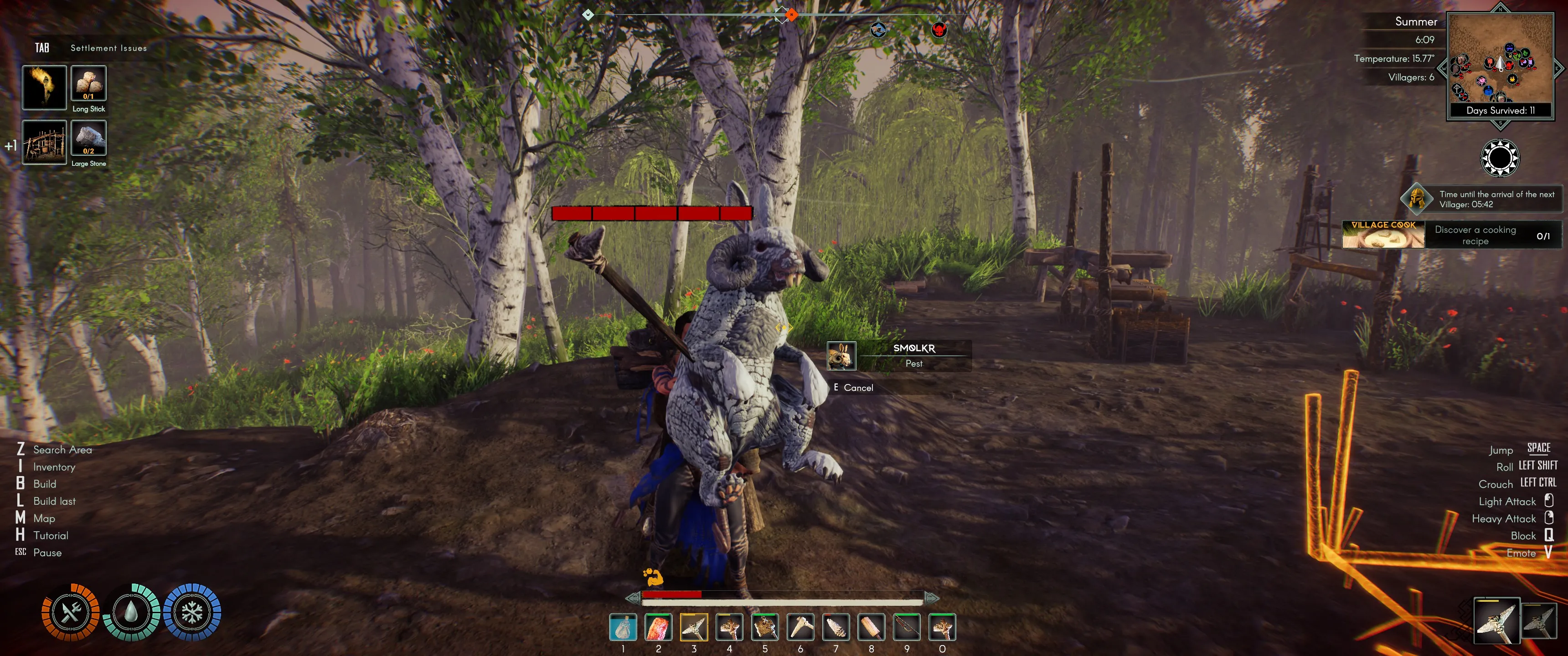Have you ever had one of those days where you were so overwhelmed with tasks, that you had to reach out to your colleagues and ask them to please share the workload? ‘Yeah sure I will help you, do not worry, I got this!’
A huge burden falls from your shoulders as you hear these words. You think to yourself: ‘Thank Odin, finally I'll have time for the important stuff!’
Released from the grasp of your workbench, you head off into the woods to explore the vast landscape. In the background sits your tiny village where you are not only the chieftain, but also… the cook, the hunter, the farmer, the builder, the warrior… and the babysitter.
As soon as your silhouette vanishes between the trees, your ‘helpful hands’ roll up their sleeves, put up their shaded sunglasses and relax.
As the guard mumbles to himself: ‘I feel unsafe in my own home. Why does no one defend the village?!’, the cook tries to grasp the link between the stove and the huge pile of meat on the side and the workstation turns into a break room for the smith, the gardener and the newly invading draugrs, your little stroll comes to an abrupt end.
There is a saying, ‘Happiness is the only product in the world that multiplies by division’ - in your little village this also applies to workload. This was a run-down of our first few hours in ASKA, a Viking-themed crafting action-adventure game by Sand Sailor Studio. Reading the developer’s description of their game, which was released into Early Access on Steam on June 20, 2024, they describe the game as follows:
Lay claim to unspoiled lands and pave the way for a fierce Viking tribe. Craft the ultimate settlement solo or together with up to x3 friends. Trust in the Gods and the power of the Eye of Odin and summon intelligent NPC villagers to provide camaraderie and relief from the toils of survival. (Source: Steam Store, July 2nd 2024)Those three sentences spoke to our survival-crafting hearts. Building a Viking-themed village with the help of NPCs that take their share of all the gathering, building and crafting? That sounds great! Unfortunately though, our villagers were not only far from eligible to put the words ‘fierce’ or ‘intelligent’ into their resume, they were also constantly trying to add more distress and chaos to our fight for survival. At one point, we jokingly started calling our settlement ‘Toddler Town’, as they seemed equally coordinated as a Kindergarten group. When they also began to raid our storages and stashes more relentlessly than any of the bunny-like Smolkrs ever could, (and therefore left us behind hungry and thirsty) we finally began to question their allegiance.
But - before you turn away now: we also had a really good time during the 37 hours we played. There is a solid base and some really good ideas that just need a little more time to cook and mature. In the following Early Access review of ASKA, we put down our initial thoughts, what we liked and what, in our opinion, still needs improvement.
We will revisit the game again after some more development has been made and time has passed, so our opinion and the game itself are not made of stone at this point.















